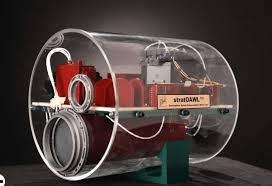
Breaking News
 Protecting a Societal Cancer with a Web of Lies
Protecting a Societal Cancer with a Web of Lies
 Col. Macgregor's Dire Warning For 2026!
Col. Macgregor's Dire Warning For 2026!
 The DYSTOPIAN Future of News: How AI Is DECIDING WHAT YOU THINK!!
The DYSTOPIAN Future of News: How AI Is DECIDING WHAT YOU THINK!!
 Former Israeli spies now overseeing US government cybersecurity
Former Israeli spies now overseeing US government cybersecurity
Top Tech News
 This tiny dev board is packed with features for ambitious makers
This tiny dev board is packed with features for ambitious makers
 Scientists Discover Gel to Regrow Tooth Enamel
Scientists Discover Gel to Regrow Tooth Enamel
 Vitamin C and Dandelion Root Killing Cancer Cells -- as Former CDC Director Calls for COVID-19...
Vitamin C and Dandelion Root Killing Cancer Cells -- as Former CDC Director Calls for COVID-19...
 Galactic Brain: US firm plans space-based data centers, power grid to challenge China
Galactic Brain: US firm plans space-based data centers, power grid to challenge China
 A microbial cleanup for glyphosate just earned a patent. Here's why that matters
A microbial cleanup for glyphosate just earned a patent. Here's why that matters
 Japan Breaks Internet Speed Record with 5 Million Times Faster Data Transfer
Japan Breaks Internet Speed Record with 5 Million Times Faster Data Transfer
 Advanced Propulsion Resources Part 1 of 2
Advanced Propulsion Resources Part 1 of 2
 PulsarFusion a forward-thinking UK aerospace company, is pushing the boundaries of space travel...
PulsarFusion a forward-thinking UK aerospace company, is pushing the boundaries of space travel...
 Dinky little laser box throws big-screen entertainment from inches away
Dinky little laser box throws big-screen entertainment from inches away
 'World's first' sodium-ion flashlight shines bright even at -40 ºF
'World's first' sodium-ion flashlight shines bright even at -40 ºF
DARPA Laser radar can see wind 8.6 miles away and enables permanent balloons

They are testing a wind sensor to detect changes in wind speed and direction from large distances. This is part of the Adaptable Lighter-Than-Air (ALTA) balloon program. The balloons can change altitude and position to stay in one spot.
DARPA balloons could provide secure communications and navigation or act as a mother ship for drones.
Ball Aerospace has built the Stratospheric optical autocovariance wind lidar (StratOAWL) device.
OAWL shines pulses of laser light into the air. A small fraction of the beam is reflected back, and the reflected laser light is gathered by a telescope. The wavelength of the reflected light is changed slightly depending on how fast the air it bounced back from is moving, a change known as doppler shift. By analyzing this shift, OAWL can determine the speed and direction of the wind.



